
Findings for
Norway
Cite as:
Perko T. (2025): RadoNorm European Radon Behavioural Atlas: Norway, H2020 project RadoNorm, No 900009 https://www.radonorm.eu/
Methodology
Computer-Assisted Personal Interviews (CAPI) were conducted in Norway using the online panel of the marketing research company Norstat, which includes approximately 124,000 active respondents. A dynamic sampling approach was employed to obtain a sample that was as representative as possible of the adult population (aged 18 and older) in terms of gender, age, and region. Sampling quotas were guided by expected response rates across socio-demographic groups. When specific groups were underrepresented, additional participants were recruited to meet the predefined quotas, within the limitations of the panel. A weight variable corresponding to the quotas is provided in the dataset.
The survey began on December 7, 2023, with a pilot/soft launch that collected 92 responses. The data from this initial phase were shared with the Norwegian University of Life Sciences (NMBU) and the Belgian Nuclear Research Centre (SCK CEN) for review on December 12, 2023, and approved on December 13, 2023. Additional samples were distributed daily from December 13 to December 18, 2023.
Fieldwork was conducted by Norstat, a company that operates in compliance with the EU General Data Protection Regulation (EU-GDPR) and adheres to ESOMAR guidelines for market and social research. The final sample comprised N = 1,263respondents, yielding a response rate of 20.3%.
The questionnaire was collaboratively developed by the RadoNorm project and the Norwegian University of Life Sciences (NMBU). NMBU was responsible for the translation into Norwegian. Ethical approval for the study was granted by the NMBU Ethics Committee, and the data were analyzed by SCK CEN, Belgium. Data are available at: DOI:10.20348/STOREDB/1179/1305]
Download the questionnaire PDF here.
Download the technical report PDF here.
Results
Radon protection behaviour
Do people in Norway test and mitigate?
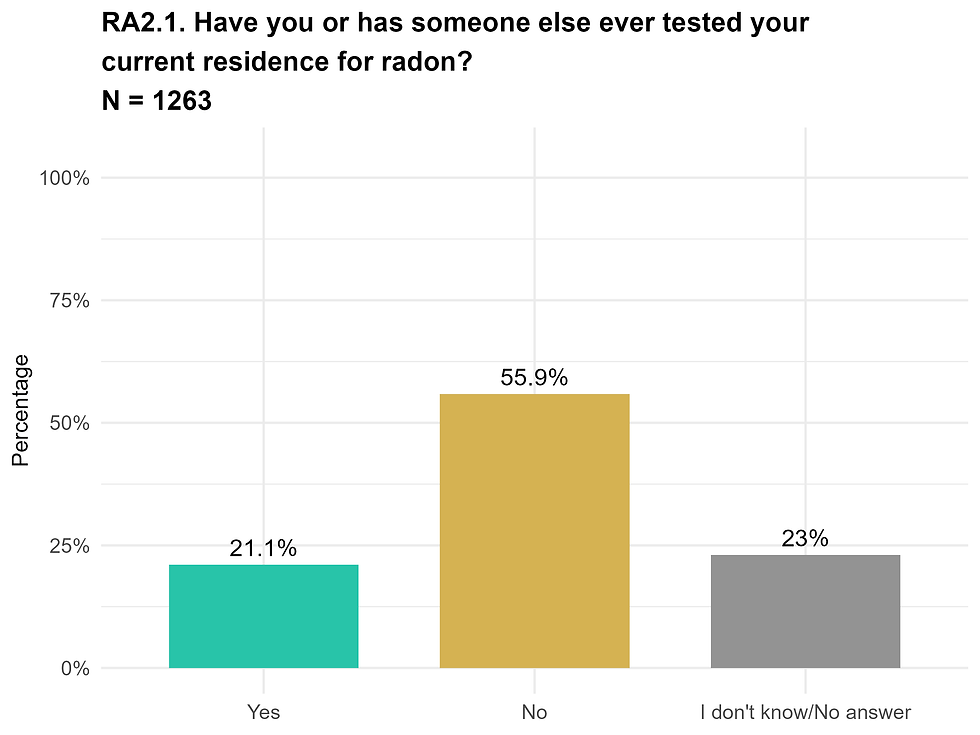



Trustworthiness of radon stakeholders
Who in Norway is recognized as a trustworthy source of information about radon risks?

Radon awareness
Are people in Norway aware of radon?

Intention to protect from radon
What is the public willingness to adopt radon protection measures in Norway?

Radon Knowledge
How much people in Norway know about radon?


Risk perception
How do people in Norway perceive radiological, radon and other risks?

Confidence in authorities for risk management
To what extent do Norwegians have confidence in their authorities' ability to manage risks?

Knowing radon stakeholders
Which stakeholders related to radon are known to Norwegians?

Truthfulness of radon stakeholders
Who in Norway is recognized as a trustworthy source of information about radon risks?


Which stakeholders involved in radon mitigation in Norway are recognized as technically competent?
Competence of radon stakeholders


Severity
What are people's beliefs regarding the seriousness of negative consequences due to radon?

Susceptibility
Do people in Norway believe that radon increases the likelihood of health consequences?

Do individuals believe dwelling remediation is effective in reducing radon concentration?
Response efficacy: remediation

Self-efficacy
Do residents in Norway have confidence in their own ability to conduct radon testing and mitigation effectively?


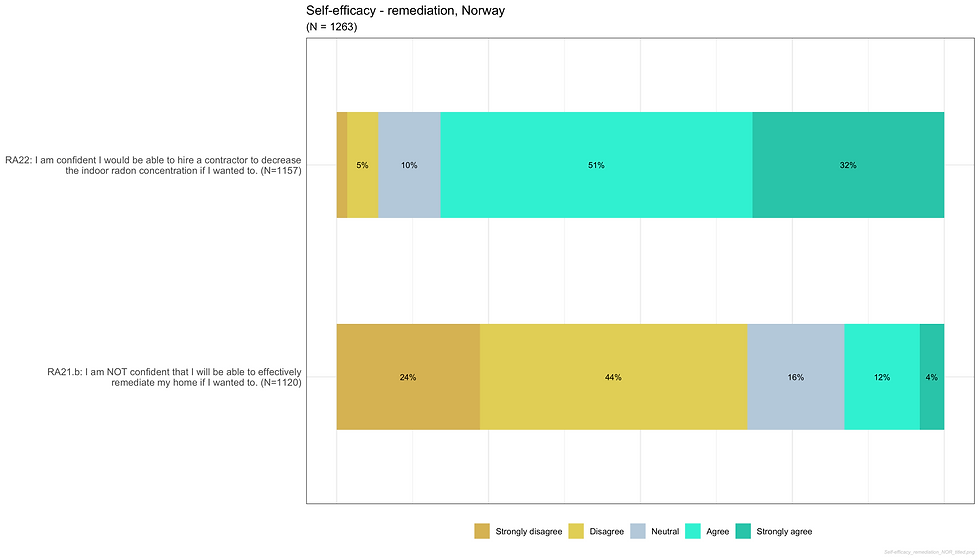
Perceived behavioural control: financial and other burden and ease
Is radon testing and mitigation perceived as a financial or other burden?




Aesthetic impact of remediation works on a dwelling
Do residents believe that radon mitigation would visually harm their homes?

Economic impact of radon on a property value
Does a radon problem in a building negatively impact its financial value?

Social influence
What are the attitudes of respondents regarding social influence?

Descriptive norms
Is radon testing and mitigation a common practice within social groups?

Subjective norms
Do family members and friends of resopondents care about radon-related issues?




Health effect perception
Do individuals have acquaintances who may have experienced health issues as a result of radon exposure?
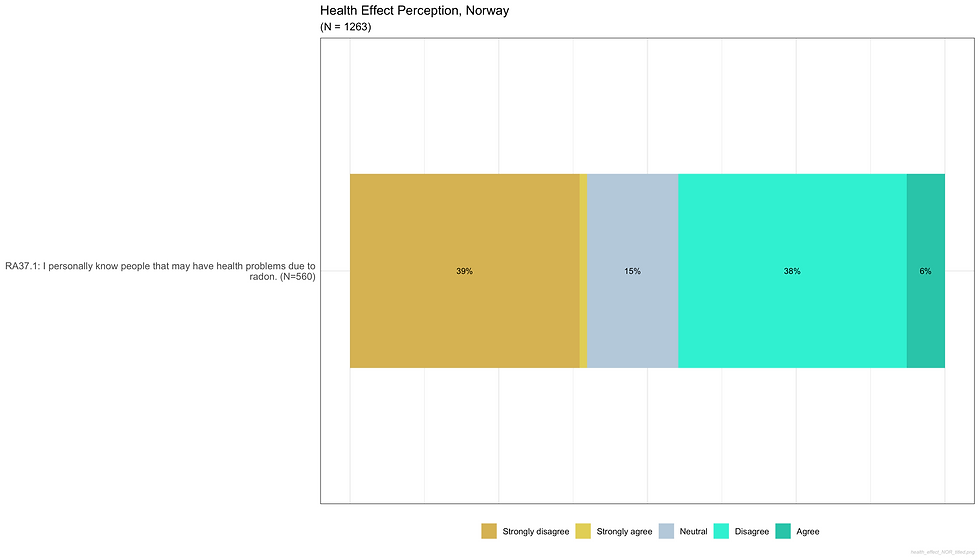
Information processing
How do people process information about radon remediation?


Information comprehensiveness
Is there enough information readily accessible?

Information uncertainty
Is there too much uncertainty to make informed decisions?

Willingness to engage
How much are people willing to engage?

Affective response to information
Does information related to radon elicit negative emotions?

Preference for post-survey radon related information
Which communication channels are recommended for radon-related communication?

Factors Influencing Behavioural Intention
Radon awareness


Social influence

Risk perception

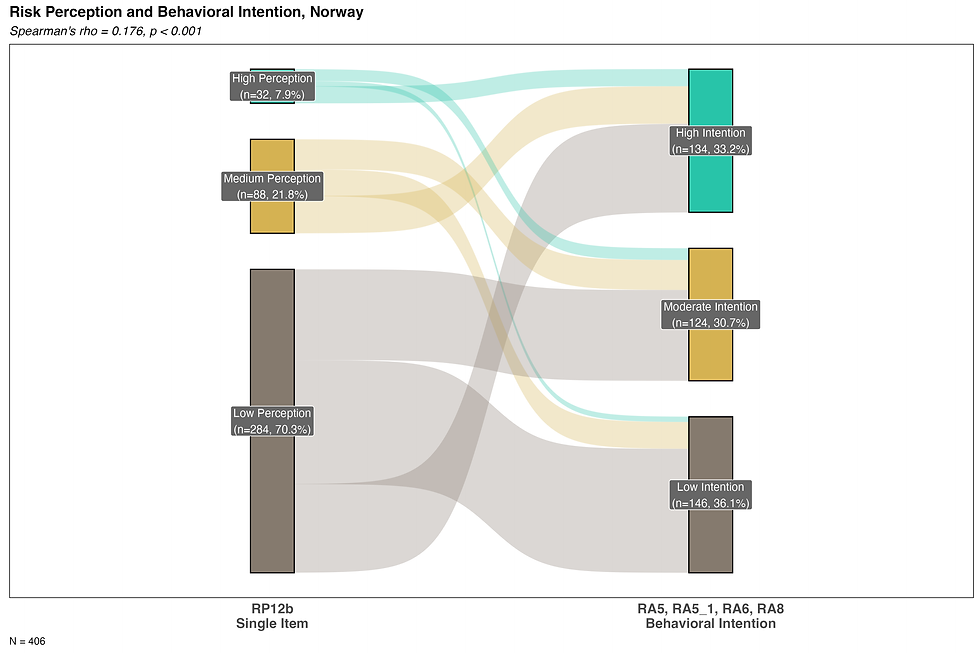
Confidence in authorities for risk management


Severity


Susceptibility


Response efficacy: remediation

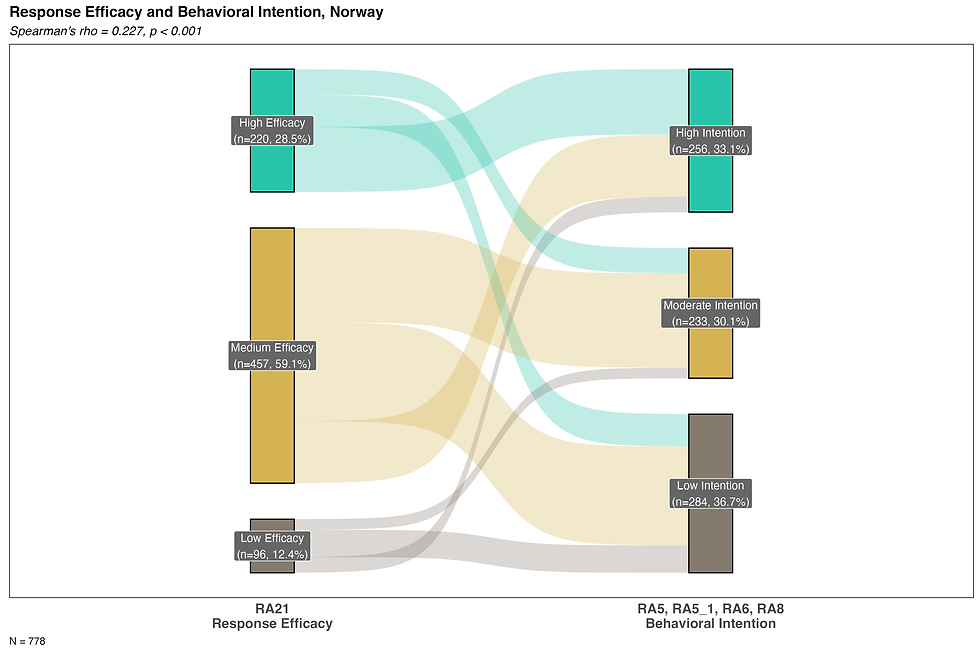
Self efficacy



Perceived behavioural control: financial and other burden and ease



Perceived cost



Aesthetic impact of remediation works on a dwelling

Economic impact of radon on a property value

Subjective norms

Descriptive norms

Health effect perception

Information processing



Information comprehensiveness

Information uncertainty

Affective response to information

Relationship Between Radon Awareness and Behavioural Intention to Act on Radon Risk

